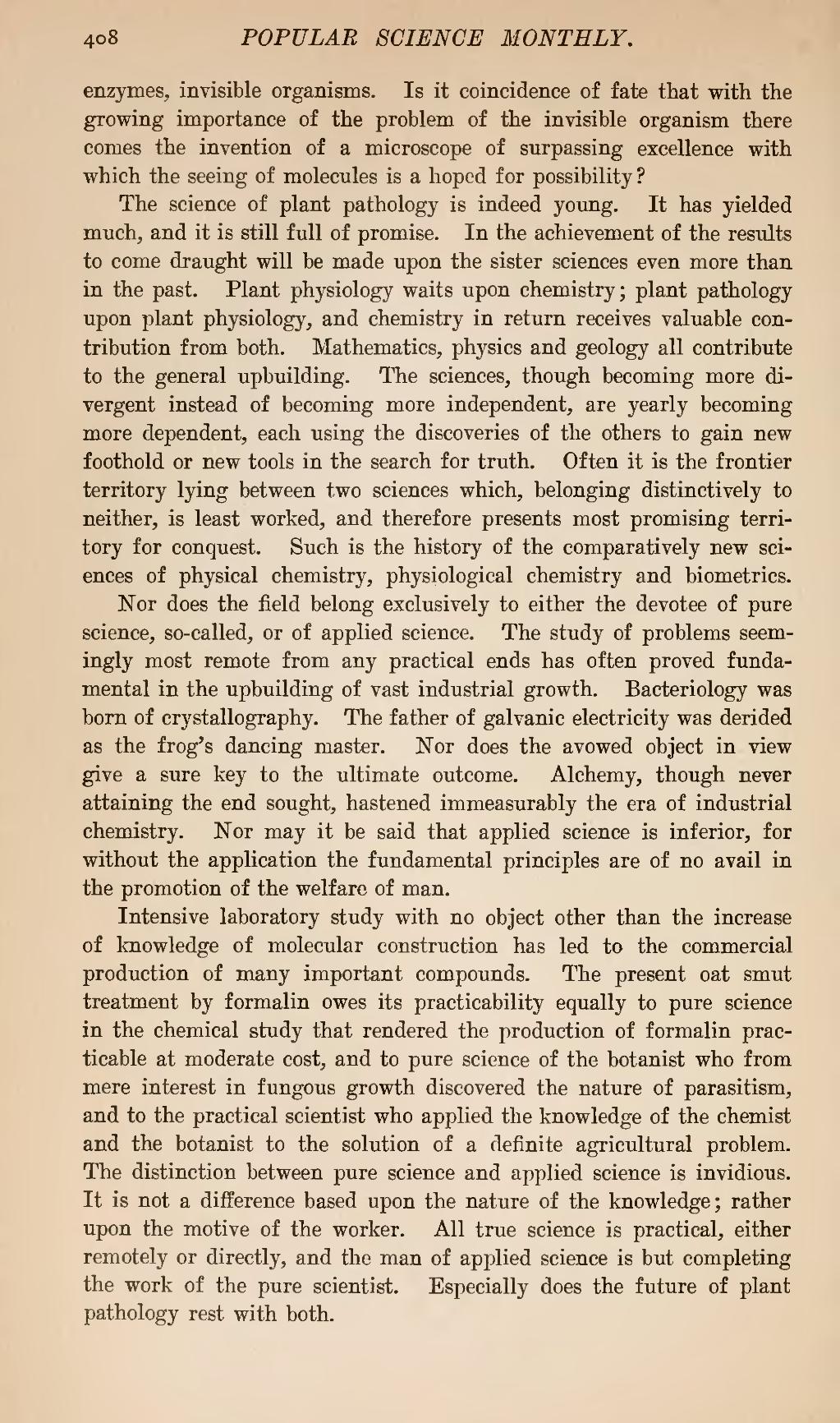enzymes, invisible organisms. Is it coincidence of fate that with the growing importance of the problem of the invisible organism there comes the invention of a microscope of surpassing excellence with which the seeing of molecules is a hoped for possibility?
The science of plant pathology is indeed young. It has yielded much, and it is still full of promise. In the achievement of the results to come draught will be made upon the sister sciences even more than in the past. Plant physiology waits upon chemistry; plant pathology upon plant physiology, and chemistry in return receives valuable contribution from both. Mathematics, physics and geology all contribute to the general upbuilding. The sciences, though becoming more divergent instead of becoming more independent, are yearly becoming more dependent, each using the discoveries of the others to gain new foothold or new tools in the search for truth. Often it is the frontier territory lying between two sciences which, belonging distinctively to neither, is least worked, and therefore presents most promising territory for conquest. Such is the history of the comparatively new sciences of physical chemistry, physiological chemistry and biometrics.
Nor does the field belong exclusively to either the devotee of pure science, so-called, or of applied science. The study of problems seemingly most remote from any practical ends has often proved fundamental in the upbuilding of vast industrial growth. Bacteriology was born of crystallography. The father of galvanic electricity was derided as the frog's dancing master. Nor does the avowed object in view give a sure key to the ultimate outcome. Alchemy, though never attaining the end sought, hastened immeasurably the era of industrial chemistry. Nor may it be said that applied science is inferior, for without the application the fundamental principles are of no avail in the promotion of the welfare of man.
Intensive laboratory study with no object other than the increase of knowledge of molecular construction has led to the commercial production of many important compounds. The present oat smut treatment by formalin owes its practicability equally to pure science in the chemical study that rendered the production of formalin practicable at moderate cost, and to pure science of the botanist who from mere interest in fungous growth discovered the nature of parasitism, and to the practical scientist who applied the knowledge of the chemist and the botanist to the solution of a definite agricultural problem. The distinction between pure science and applied science is invidious. It is not a difference based upon the nature of the knowledge; rather upon the motive of the worker. All true science is practical, either remotely or directly, and the man of applied science is but completing the work of the pure scientist. Especially does the future of plant pathology rest with both.

